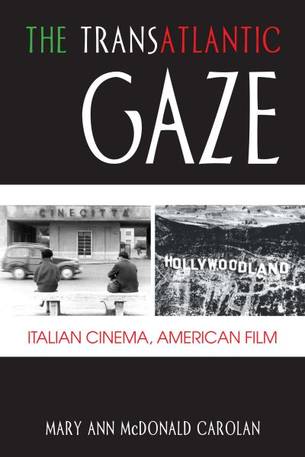


The Transatlantic Gaze retraces the influence of Italian cinema on American film from the postwar period to the present. Author Mary Ann McDonald Carolan documents the profound impact that Italian directors, actors, and screenwriters had on the American film industry. Examining several genres, including comedies, Westerns, documentaries and art house films, the author explains how and why many American directors from Woody Allen to Quentin Tarantino have adopted Italian techniques in their work.
Allen’s To Rome with Love (2012) pays homage to the genius of Italian filmmakers, Federico Fellini in particular. Echoes of Fellini’s Lo sceicco bianco/The White Sheik (1952) can also be glimpsed in Allen’s The Purple Rose of Cairo (1985) and Neil LaBute’s Nurse Betty (2000). Tarantino’s Kill Bill saga (2003, 2004) converses with elements of Sergio Leone’s spaghetti Western C’era una volta il West/ Once Upon a Time in the West (1968), a transatlantic conversation Taran- tino continues in his Oscar-winning Django Unchained (2012). Meanwhile, Lee Daniels’s Precious (2009) and Spike Lee’s Miracle at St. Anna (2008) demonstrate that the neorealism of Roberto Rossellini and Vittorio De Sica that arose from the political and economic crises of postwar Ita- ly is an effective vehicle for critiqu- ing issues of poverty and race in America.
The book closes with an examination of American remakes of popular Italian movies, drawing comparisons and highlighting dif- ferences between American and Italian culture, and illustrating how film genres have been transformed by their exchange. —
Source URL: http://test.iitaly.org/magazine/focus/art-culture/article/book-italian-american-exchange-influence-cinema
Links
[1] http://test.iitaly.org/files/gaze1398055173jpg